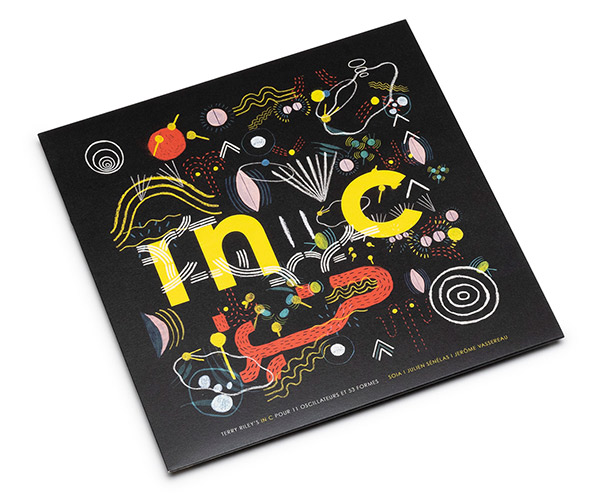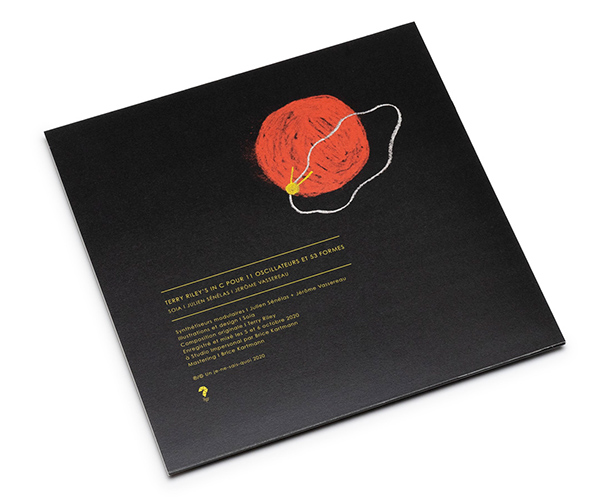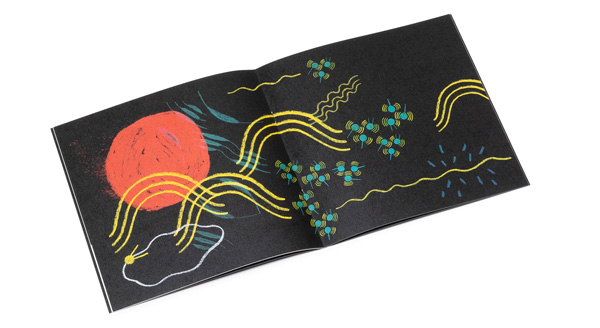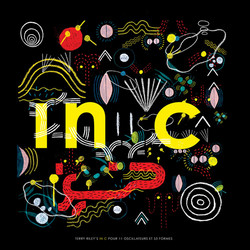Terry Riley's “In C” pour 11 Oscillateurs et 53 Formes
There are few 20th Century compositions as iconic as Terry Riley’s “In C”. A foundational work of musical minimalism, its infectious rhythms and grooves have remained so popular and influential over the decades, that had its composer created nothing else, he would still be a household name. Since Riley’s release of the work in 1968 on Columbia Records, it has been recorded dozens of times, by a diverse number of ensembles, each interpreting the elegantly open score in unique ways. The latest, “In C pour 11 Oscillateurs et 53 Formes”, by the duo of Julien Sénélas and Jérôme Vassereau - two veterans of French experimental music scene - is among the first to fully realize the work on synthesizers. Issued by Un Je-Ne-Sais-Quoi in a limited edition of 200 copies on yellow vinyl, and created in collaboration with the artist, Soia, whose 53 graphic forms interpret the score across the accompanying 24-page booklet, it’s easily among the most engrossing and exciting versions - to be seen as much as heard - to have appeared in last 50 years.


Alongside seminal early works like “Reed Streams”, “Poppy Nogood”, and “A Rainbow In Curved Air”, “In C” stands high among Terry Riley’s most beloved works. When it appeared in 1968 within Columbia’s “Music of Our Time” series - produced by the composer David Behrman - it was among the first instances that a wide audience was offered access to the emerging movement of musical minimalism, predating the recording releases of Steve Reich's “Drumming” and Philip Glass' “Music With Changing Parts” by a handful of years. Composed in 1964, arguably more than any other minimalist work of the period, “In C” heralded the end of the hegemony of the uptown New York School - John Cage, Morton Feldman, Earle Brown, and Christian Wolff - proposing an alternate path for the avant-garde that embraced the use of harmony and metric rhythm. Not only was it radical and entirely new, but it was incredibly listenable.
First performed by Steve Reich, Jon Gibson, Pauline Oliveros, Stuart Dempster, Morton Subotnick, and others at the San Francisco Tape Music Center, not long after it was composed in 1964, “In C” is particularly striking for its openness within a system of relative constraint. It allows for an indefinite number of performers, and can be of any length in duration. The score consists of 53 short numbered musical phrases, lasting from half a beat to 32 beats. Each phrase may be repeated any number of times, to be determined by each musician, offering the players - individually and collectively - a remarkable amount of control over how the work takes form. As such, it is almost impossible to be exactly the same thing twice.
Over the course of its life, numerous ensembles have performed interpretations of “In C” on everything from percussion to traditional Chinese instruments, but almost none have brought it to life using only synthesis. Not only does Julien Sénélas and Jérôme Vassereau’s rendition feature one of the smallest ensembles to record the work - 2 performers on 11 oscillators, but it quickly highlights how disposed to a synthesizer's natural abilities the work actually is. Clocking in at just under 38 minutes, “In C pour 11 Oscillateurs et 53 Formes” is rippling tapestry of appreciating tone, rendering Riley’s masterstroke in ways that it’s never been heard. Perhaps because of the limits imposed by the ensemble’s scale - only two players - or through careful decision, it comes to life with a surprising sense of constraint and space. Each note feels considered and placed. Arguably even more striking, given the cope of possibilities afforded by a synth, there is a palpable sense of each choice made by the musicians, from a near infinite pallet of sounds.


A joyous revelation on numerous levels, “In C pour 11 Oscillateurs et 53 Formes”, complete with Soia’s 53 graphic interpretations of Riley’s original score, shouldn’t be missed. Issued by Un Je-Ne-Sais-Quoi in a limited edition of 200 copies on yellow vinyl, it’s a revelation that unlocks one of the most iconic works of minimalism in ways that have been rarely heard.



